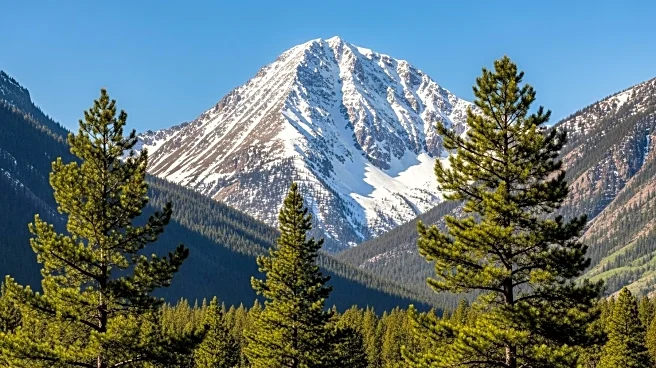The Rocky Mountains are a vital ecological region in North America, supporting a wide range of habitats and species. The complex interactions of elevation, slope, and regional air masses create diverse climatic conditions within
the range. This diversity supports a variety of ecosystems, from alpine tundra to dense forests, each with its unique flora and fauna. The Rockies are also a critical water source for the surrounding areas, with many rivers originating in the mountains.
Habitat or Environment
The Rocky Mountains encompass a range of ecological zones, including alpine tundra, subalpine forests, and montane forests. The elevation and climate variations across the range create
distinct habitats that support diverse plant and animal species. The Continental Divide, which runs through the Rockies, plays a significant role in shaping the climate and ecosystems on either side of the range.
Interactions and Dependencies
The ecosystems within the Rockies are interconnected, with species relying on each other for survival. For example, the presence of large predators like wolves and bears helps maintain the
balance of herbivore populations, such as elk and deer. The diverse plant life provides food and shelter for a variety of wildlife, while the rivers and streams originating in the mountains are crucial for both aquatic and terrestrial species.
Conservation or Status
Conservation efforts in the Rocky Mountains focus on preserving the unique ecosystems and protecting the wildlife that inhabits them. National parks and protected areas within the
range, such as Rocky Mountain National Park, play a crucial role in these efforts. These areas help safeguard the habitats from human activities and environmental threats, ensuring the long-term survival of the region's biodiversity.
Human Impacts
Human activities, such as logging, mining, and tourism, have significant impacts on the Rocky Mountains' ecosystems. These activities can lead to habitat destruction, pollution, and increased human-wildlife
conflicts. Conservation initiatives aim to mitigate these impacts by promoting sustainable practices and raising awareness about the importance of preserving the Rockies' natural environment.

 Discover Daily
Discover Daily 










